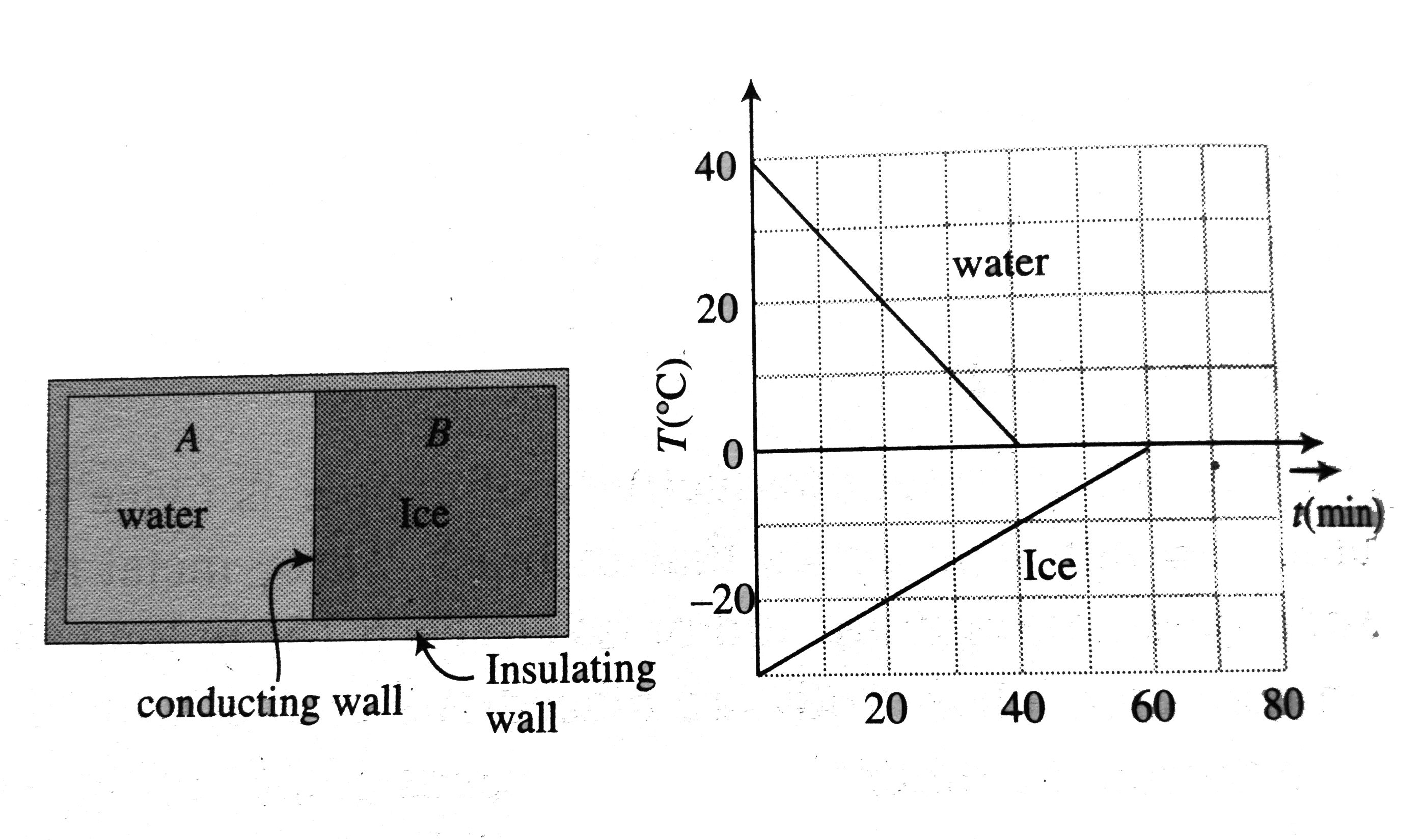There is no transfer of heat at thermal equilibrium.
Step-by-Step Solution
1. Understanding Thermal Equilibrium:
- Thermal equilibrium occurs when two bodies are at the same temperature and there is no net flow of heat between them.
2. Identifying Temperature Difference:
- Consider two bodies, Body A at temperature T1 and Body B at temperature T2. If T1 > T2, heat will flow from Body A to Body B until they reach the same temperature.
3. Heat Transfer:
- Heat transfer occurs due to a temperature difference. Body A, being at a higher temperature, will transfer heat to Body B until both bodies reach a common temperature (T0).
4. Achieving Thermal Equilibrium:
- Once both bodies reach the same temperature (T0), they are in thermal equilibrium. At this point, there is no longer a temperature difference between them.
5. Conclusion:
- Since there is no temperature difference at thermal equilibrium, there is no transfer of heat. Therefore, the statement "There is no transfer of heat at thermal equilibrium" is true.
Final Answer
The statement is true: There is no transfer of heat at thermal equilibrium.
---
- Thermal equilibrium occurs when two bodies are at the same temperature and there is no net flow of heat between them.
- Consider two bodies, Body A at temperature T1 and Body B at temperature T2. If T1 > T2, heat will flow from Body A to Body B until they reach the same temperature.
- Heat transfer occurs due to a temperature difference. Body A, being at a higher temperature, will transfer heat to Body B until both bodies reach a common temperature (T0).
- Once both bodies reach the same temperature (T0), they are in thermal equilibrium. At this point, there is no longer a temperature difference between them.
- Since there is no temperature difference at thermal equilibrium, there is no transfer of heat. Therefore, the statement "There is no transfer of heat at thermal equilibrium" is true.
The statement is true: There is no transfer of heat at thermal equilibrium.
Topper's Solved these Questions
- HEATBOOK - ICSECHAPTER - HEATEXERCISE - EXERCISE (SECTION I) (Choose the correct option to fill in the blank.)
9 Videos
- HEATBOOK - ICSECHAPTER - HEATEXERCISE - EXERCISE (SECTION II) (Give Reason)
8 Videos
- HEATBOOK - ICSECHAPTER - HEATEXERCISE - EXERCISE (SECTION I) (Choose the correct option)
9 Videos
- FORCE AND PRESSURE : MOTION BOOK - ICSECHAPTER - FORCE AND PRESSURE : MOTION EXERCISE - EXERCISES (SECTION II) (Picture Study)
4 Videos
- LIGHT ENERGYBOOK - ICSECHAPTER - LIGHT ENERGYEXERCISE - EXERCISE (PICTURE STUDY)
10 Videos
Similar Questions
Knowledge Check
In which process, the rate of transfer of heat is maximum ?
AConductionBConvectionCradiationDin all these, heat is transferred with the same speed.

A 0.60 kg sample of water and a sample of ice are placed in two compartmetnts A and B separated by a conducting wall, in a thermally insulated container. The rate of heat transfer from the water to the ice through the conducting wall is constant P, until thermal equilibrium is reached. The temperature T of the liquid water and the ice are given in graph as functions of time t. Temperature of the compartments remain homogeneous during whole heat transfer process. Given specific heat of ice =2100J/kg−K, specific heat of water =4200J/kg−K, and latent heat of fusion of ice =3.3×105J/kg.
The mass of the ice formed due to conversion from the water till thermal equilibrium is reached is equal to
View Solution
A 0.60 kg sample of water and a sample of ice are placed in two compartmetnts A and B separated by a conducting wall, in a thermally insulated container. The rate of heat transfer from the water to the ice through the conducting wall is constant P, until thermal equilibrium is reached. The temperature T of the liquid water and the ice are given in graph as functions of time t. Temperature of the compartments remain homogeneous during whole heat transfer process. Given specific heat of ice =2100J/kg−K, specific heat of water =4200J/kg−K, and latent heat of fusion of ice =3.3×105J/kg.
The mass of the ice formed due to conversion from the water till thermal equilibrium is reached is equal to
View Solution4gm of steam at 100∘C is added to 20gm of water at 46∘C in a container of negligible mass. Assuming no heat is lost to surrounding, the mass of water in container at thermal equilibrium is. Latent heat of vaporisation =540cal/gm. Specific heat of water =1cal/gm−∘C.
View SolutionName the mode of transfer of heat in the liquid
View SolutionThe equivalance of two systems in thermal equilibrium is represented by the property of
View SolutionName the mode of transfer of heat in the solid
View SolutionIn semiconductors, which one of the following relations is correct at thermal equilibrium?
View Solution
